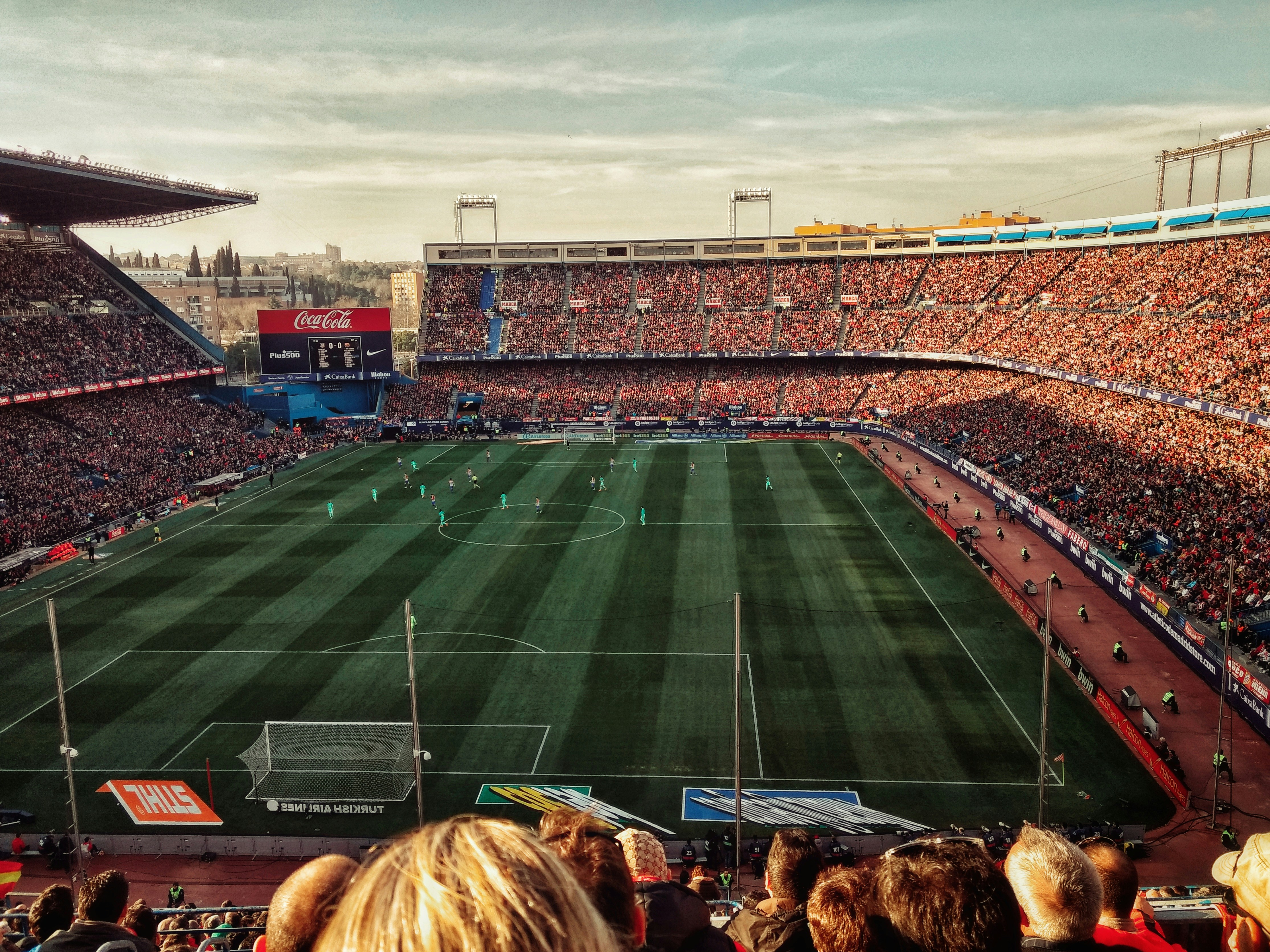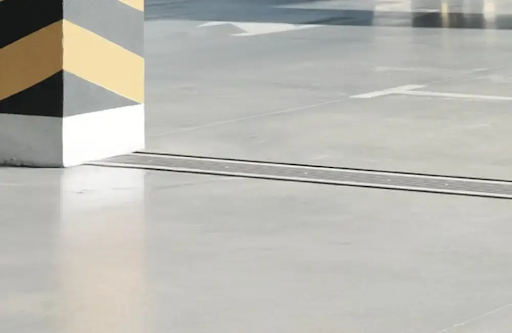Expansion Joint Systems for Stadiums and Large Venues: Built for the Big Stage

When it comes to stadium design, expansion joints are essential. These massive, high-traffic structures endure constant stress from weight, weather and movement. Expansion joint covers and seals used in stadium applications are designed to absorb those forces, stand up to heavy foot traffic and help safeguard tens of thousands of people at once.
They’re the quiet, behind-the-scenes players that keep these massive venues safe, comfortable and long-lasting. While they can be added during renovations, it’s far safer and more efficient to integrate them into the original design.
What Are Expansion Joints in Stadium Applications?
Movement joints (expansion joints) are carefully placed gaps that let a stadium flex and breathe with its environment. They accommodate everything from temperature swings and wind to structural deflection and seismic activity — all without causing cracks, misalignment or damage to the building.
Due to their large size and complex design — open seating bowls, cantilevered decks and long concourses — stadiums require joints at key points to absorb movement across different zones.
To ensure safety and a smooth visitor experience, expansion joint covers are installed over these movement gaps in walkways and concourses. They should be designed to be surface- or flush-mounted and slip-resistant, preventing trips and keeping paths clear during peak crowds.
These joints must also handle heavy foot traffic from thousands of spectators, as well as machinery and service loads.
Benefits of Expansion Joints in Stadium Design

Designing or retrofitting a stadium or large venue with an expansion joint system delivers major benefits. Let’s take a look.
Managing Structural Movement and Stress
Stadiums experience significant structural stress due to their size, wide spans and exposure to the elements. Movement joints are strategically placed to absorb this stress — allowing decks, seating tiers and roofs to expand and contract independently without cracking or misalignment.
Expansion joint covers and seals are then installed over these movement gaps to protect them from wear and exposure while maintaining a safe, continuous walking surface. This combination ensures both structural flexibility and visitor safety.
Ensuring Durability in Weather-Exposed Environments
Stadiums face constant exposure to sun, rain, snow and wind. Expansion joint systems protect against this wear by sealing out moisture while allowing for movement to occur. Without them, water can infiltrate gaps, causing corrosion and freeze-thaw damage.
Of course, the materials matter, too. With UV-resistant elastomers, corrosion-resistant metal expansion joint covers and heavy-duty anchors, stadiums can handle extreme conditions for the long haul.
Reducing Long-Term Maintenance Cost
By allowing concrete, steel and other materials to expand and contract safely, expansion joints protect the structure and finishes from early wear. That means less maintenance, lower repair costs and a longer-lasting stadium, saving time and a lot of money.
Extending the Lifespan of Stadium Facilities
Expansion joint systems allow a stadium to endure decades of movement and environmental stress without major damage. By absorbing expansion, contraction and shifting forces, they extend the life of the building.
Types of Expansion Joints Used in Stadium Construction
Stadiums use several types of expansion joints, each designed for specific movements and performance needs.
- Floor joints in concourses, walkways and seating tiers manage slab movement while maintaining smooth, slip-resistant surfaces.
- Roof and façade joints absorb thermal and wind-induced movement, protecting large-span roofs and building envelopes from damage.
- Seismic joints allow each part of the stadium to move independently during earthquakes, preventing structural failure.
- Wall and ceiling joints handle the movement in concourses, tunnels and service areas, preventing cracks and misalignments that could affect both performance and aesthetics.
Materials for Expansion Joint Covers and Seals
Selecting the right materials is essential to ensure long-term performance and safety. Here are some commonly used options:
- Compression Seals Expansion Joint: Designed specifically for decks and stadiums, a pre-compressed foam system is watertight and withstands high movement and traffic loads found in parking structures.
- Flexible Rubber Expansion Joint: Designed for low-speed vehicular traffic on parking decks, this system is also well-suited for pedestrian walkways. Its rubber-coated surface and flexible rubber hinges provide a quieter, smoother ride.
- Expansion Joint Systems With Elastomeric Seals: Providing flexibility, strength and noise reduction, this solution is ideal for areas with frequent movement and heavy foot traffic.
- Expansion Joint Systems With Metal Joint Covers: Ideal for environments exposed to heavy equipment or vehicular loads, metal covers deliver exceptional strength and load-bearing capacity, making them ideal for both everyday use and high-traffic areas.
- Waterproofing and Fire-rated Barriers: These add protection and code compliance in exterior joints.
Choosing the Right Expansion Joint for Stadium Applications
When selecting a stadium expansion joint system, it’s important to match its performance to structural, functional and environmental demands.
Key considerations should include the anticipated movement ranges from thermal expansion, seismic activity, live loads and the amount of pedestrian and vehicular traffic.
The local climate and exposure to weather, UV and moisture should also be a priority. The system must then integrate seamlessly with surrounding finishes without compromising waterproofing or the stadium’s aesthetic.
The best expansion joint system for a stadium project is one that balances flexibility, protection and longevity while meeting code requirements and the stadium’s operational needs.
Installation Best Practices

Proper installation is imperative for stadium and other large-scale expansion joints projects. Hiring factory-trained and certified expansion joint installation professionals is the best choice, as their training and experience ensure the system is installed correctly and performs as intended.
Professional Installation vs. Non-Specialist
Professional expansion joint installers are incredibly precise with their alignment, anchoring and sealing. They understand how to coordinate joints with adjacent materials, integrate fire and waterproofing barriers and meet code requirements without compromising the beauty of the stadium.
When expansion joint covers and seals are installed by inexperienced or unskilled crews, the results can be problematic — uneven joints, leaks, premature failures and safety hazards for the public in the worst cases. In a stadium environment, where joints endure constant heavy use and high visibility, the consequences of poor installation are magnified.
Best Practices for Proper Installation and Sealing
Expansion joints must be installed only after all substrates are prepared to specification — clean, level, dry and free of laitance, dust or contaminants that could compromise adhesion or alignment. All anchors, retainers and fastening hardware should be set within strict design tolerances, ensuring true alignment and consistent joint width while accounting for specified thermal and structural movement ranges.
Waterproofing membranes, fire-rated barriers and vapor seals must be fully integrated and terminated in accordance with manufacturer instructions and project specifications, with continuous, unbroken protection across the joint. Sealants should be applied under controlled conditions to achieve complete bond lines, watertight seals and fire resistance performance that meets UL/ASTM criteria.
During subsequent construction phases, joints must be physically protected with covers, shields or temporary barriers to prevent deformation, puncture or contamination caused by heavy equipment, staging or debris. Proper protection and verification at each stage of installation is critical to ensuring long-term performance and safety in high-traffic, high-load environments such as stadiums.
Maintaining Expansion Joint Systems for Stadiums
Expansion joints typically don’t need much maintenance. However, routine upkeep is the best way to ensure they continue to perform well and maintain their durability.
Routine Inspections and Preventive Maintenance
Preventive maintenance includes cleaning debris from joints, checking seals for wear or cracking, ensuring metal retainers remain secure and reapplying sealants or coatings as needed to preserve waterproofing and fire protection.
Regular attention prevents small issues like leaks, misalignment or material fatigue from becoming costly failures that disrupt operations or compromise safety.
Repair and Replacement of Damaged Expansion Joints
If you find any damage during your inspection, quickly fix or replace expansion joints to keep the structure safe and reliable.
Damaged joints can quickly lead to water intrusion, concrete spalling, trip hazards or compromised fire barriers, all of which pose major risks to the building and its occupants.
Addressing issues early prevents minor wear from escalating into large-scale damage that’s far more costly and disruptive to fix.
Find the Right Expansion Joint System for Your Project

Whether it's new construction or a major retrofit, proper expansion joint installation is critical to a stadium's structural integrity. To get the most out of your build, rely on high-quality solutions and experienced professionals for long-term performance and reliability.
At Nystrom, we are an industry leader in expansion joint systems, continually advancing with new technologies and materials. Our Open Air structure expansion joints, which include our Seismic Wing System, are designed to deliver long-lasting stability and protection that today's stadiums demand.
Explore our offerings for more details on our innovative solutions, or talk with our experts for help selecting the right system for your project.


